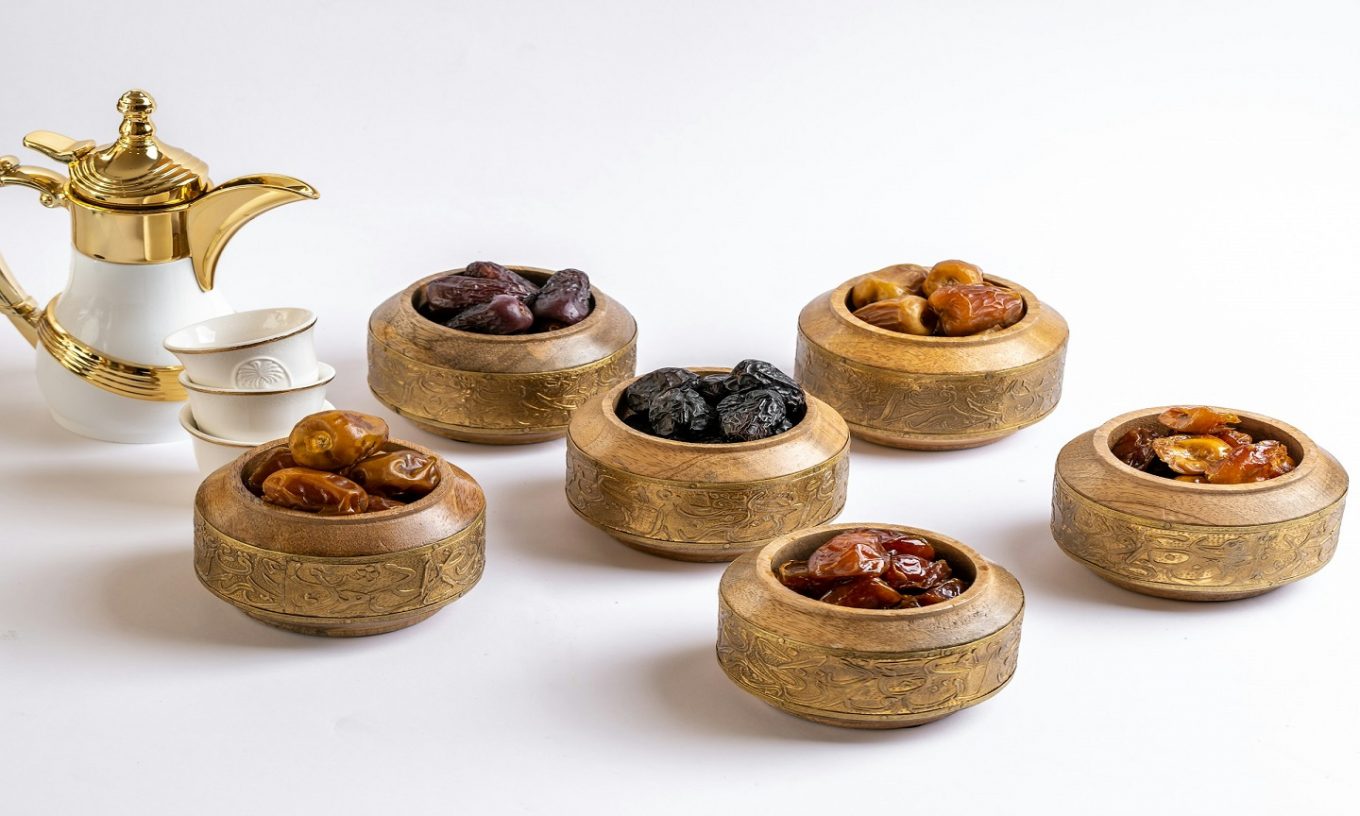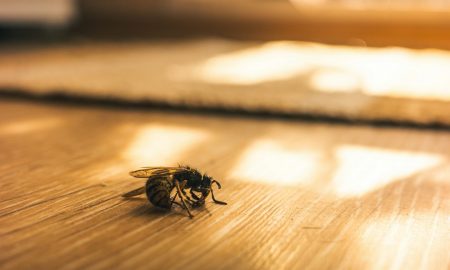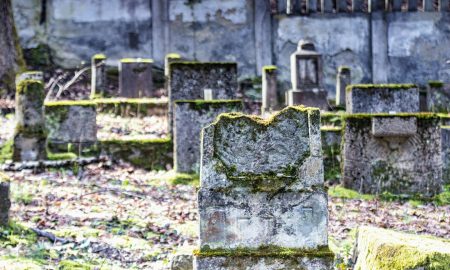Leafing through old botanical volumes, I am taken back to my childhood when I hadn’t yet mastered English but spent my time looking at illustrations of plants in a yellowing tome of natural history. I imagined spaces where the plants in the English book—a rarity at my home—would grow. When I came across three volumes of The Floral Cabinet and the Magazine of Exotic Botany, published in 1837, 1838 and 1840, I thought about the word “exotic” and how the flowers in the pages, such as the majestic hibiscus, and the vibrant cosmos among others, surrounded me while growing up. While a lot has changed, what has remained constant is the act of imagining spaces and forging connections to them. I do not have a floral cabinet, but I do have a kitchen cabinet with dried hibiscus inside.
Connections can be found in unexpected spaces, such as greenhouses and the flora they house. Despite knowing about greenhouses and histories of violence behind their creation, I wasn’t prepared for the array of emotions that assailed me when I visited a greenhouse for the first time—inside the Jardins Botaniques in Montreal. Under the glass dome of the greenhouse, I saw curry leaves, papayas, bananas, and perhaps even jackfruits—flora that flourished in the backyards of my various childhood homes. Plants from a warm world enveloped in a glass dome in a snow-blanketed city. If I ignored the glass dome, I could pretend that I was somewhere else, somewhere familiar.
It is difficult to reconcile the wonder I felt while stepping into a botanical garden and the history of violence in their creation. These histories are stories of curation, circulation, and plunder. Jamaica Kincaid does not mince words when she describes the Kew Gardens in London as “a clearing house of for all the plants stolen from the various parts of the world.” People, plants, and animals were violently transported from one part of the world as prized specimens and property. My academic knowledge had given me a prism to view the botanical garden as an integral part of colonial history. Yet, while standing inside a greenhouse filled with tropical plants, I was tempted to disregard this violent history. The greenhouse was a way to remember the place I’d come from.
In addition to the greenhouse in Montreal, I also visited the Kew Gardens. Kew was an expanse of green inside the speedy cityscape; once inside, city sounds softened, and the sense of bustle slipped away on the paths in the arboretum. 15000 panes of glass making the Temperate House inside the gardens gleamed under the summer sun. The Kew website describes the Temperate House as “a glittering cathedral” that houses 1500 species of plants from Africa, Asia, the Americas, New Zealand and the Pacific Islands. If the Temperate House is a cathedral, perhaps then, the god being worshipped in this cathedral is one for collecting and curation. Lucille Brockway writes that inside Kew, it was possible to “feel the extent of the British maritime and colonial penetration of the entire world.” Standing on the treetop walkway, I looked at the canopy made possible by this colonial current of circulation. I clicked a picture of this constructed, controlled, and curated landscape.
As I walked through the greenhouse with a friend, I spotted plants that were a part of my childhood. I spotted the Madagascar Periwinkle, which grew abundantly in Kerala and was called Corpse flower in Malayalam. Plants that grew haphazardly as opposed to those arranged meticulously in a pan-global mosaic of plants. Each time I thought I saw something familiar, I told my friend, and she would tell me whether the same plant was present where she grew up. After our trip, my friend went back to Orissa, her home. Later, she sent me a photo on WhatsApp with the caption, ‘Putus flowers (in Oriya)—the ones we saw at Kew Gardens.’ These plants, brought from different parts of the world, now under a single glass dome, serve as testaments to histories of circulation. Seeing curated plants at Kew, transported to the UK, also offered a counterpoint for my reflections on my entry into the UK as someone from a former colony and how difficult it was to obtain a visa to enter the country.
During my visit to the Kew Gardens, I visited the gift shop. While I refused to spend money in the British Museum gift shop, I succumbed to the various botanical products at Kew, purchasing a bar of soap that smelled of bergamot, bookmarks with botanical illustrations and floral notebooks. Similar to the botanical tomes, the bergamot bar brought me back to my childhood, to a generational history of circulation and migration.
Fuelled by the Gulf Boom, a demographic movement that led men from Kerala to work in countries in the Gulf Cooperation Council, my father left to work in the UAE in the 90s. Consequently, I saw him once every two years when I was growing up. Whenever he returned home, he always bought gifts for the family in large cardboard boxes held together with tape and colorful plastic rope. Boxes full of objects that had moved from one part of the world to another. Among those objects, there are two that I am drawn to even today in my own stories of circulation: soaps and dates.
My father brought back different kinds of soaps—Yardley, Lux and Pears. Of all the soaps, the most sought-after gift was Pears soap—the semi-translucent golden brown bar with its delicate scent. Soap, especially Pears soap, has its own history of circulation in the annals of colonialism. In the 1890s, the company used racial advertisements to promote its soap. For instance, an image titled “The Birth of Civilization–A Message from the Sea” shows a crate of Pears soap washed up on a seashore. A black man holding a bar of soap in one hand and a spear in the other hand stands next to the crate. The accompanying text in the advertisement claims that using soap is a sign of ‘civilization.’ In yet another advertisement from the same era, Pears soap is part of the white man’s burden to teach the virtues of cleanliness to brighten “the dark corners of the earth.”
Thanks to globalization, Pears soap has become ubiquitous in India. It became possible to buy Pears soap not just in the original golden brown color, but also in a cool blue and a cleansing green. As I think about soap in the grand scale of world history and the infinitesimal scale of my own childhood, I am forced to go back to the bar of soap I purchased from the Kew Gardens. This is not to say that my purchase was dictated by hidden historical patterns but to say that everyday objects have histories of circulation that go beyond one’s own life.
The second item that I vividly recall from my father’s boxes is dates. Once, he brought back dates that he’d picked from a palm; I remember the soft luscious sweetness on my tongue. Now, I have my own evening ritual with dates. Under the dim yellow light of my kitchen, I stand next to the sink and pull a date apart to eat it. As I do this, I remember my father, the dates he brought back, and my mother who put those dates in glass jars filled with honey. While the flesh comes apart from the seed, I remember those dates which travelled in a box from UAE to Kerala. I behold the date in my hand, which according to its box came from Iran. I visualize those distant geographies represented by dates, the sunshine that nourished palms in the desert, sunshine that was now sweetness on my tongue.
While I thought about writing a personal history of circulation for dates, I stumbled across an essay in the Smithsonian Magazine about the history of dates. The author of the essay describes looking at ancient texts in search of references to the date palm. I went in search of date palms in illustrated botanical tomes. After reading the essay, I looked for different varieties of dates; I’d been eating the Mazafati from Iran. On a severely windy winter evening, I walked to a supermarket and found Deglet Noor dates from Algeria. I brought a box home and took a date apart next to my kitchen sink. Though not as soft or sweet as the ones from my father’s box, the Deglet Noor tasted the same as the ones I’d eaten in my childhood. The palm section in The Floral Cabinet (1840), which includes the date palm, describes “the air of magnificence” that palms “stamp on the tropical landscape.” While I have never seen a date palm, I can imagine their magnificence.
When I stand with a date in my hand or next to curry leaves inside a greenhouse, I think about the places that these plants had traversed to be with me in this present moment. These plants are also a means to hold on to places from my life while being a part of generational histories of circulation and migration. My grandfather was a part of the Malabar migration in Kerala, a largely Christian movement from South Kerala to Malabar in the north in the 1920s. The migrants tried to tame large tracts of forests to establish farms and Christian communities. I thought I would have time to ask my grandfather about these stories, but he passed away before I could ask him. My father was part of a different migratory movement that saw the Gulf as the land of opportunity, though it didn’t prove to be so for him. Occasionally, he speaks about demanding physical labour in unbearable heat. I haven’t been able to ask him to speak more about his experience. Unlike my grandfather and my father, my history of circulation is bound up with my education in languages. English took me away from my hometown and then French took me away from my country for the first time. Now, English has brought me to Montreal as a graduate student.
Standing next to my kitchen sink, I see the date in my hand as a convergence of these histories of circulation. Even though I wished to leave, on some days, while going through my evening ritual with dates, I’m struck by an inexorable loneliness, with my mind reaching for something familiar to hold on to at that moment. Deglet Noor, or the date of light, illuminates those geographies that have formed me as a person. When I see greenhouses today, I am cognizant of the histories they represent, but I can also lean into how they alleviate my sense of loneliness for places left behind, even though a greenhouse is just a patchy, curated landscape.
Photo by Glenov Brankovic on Unsplash





